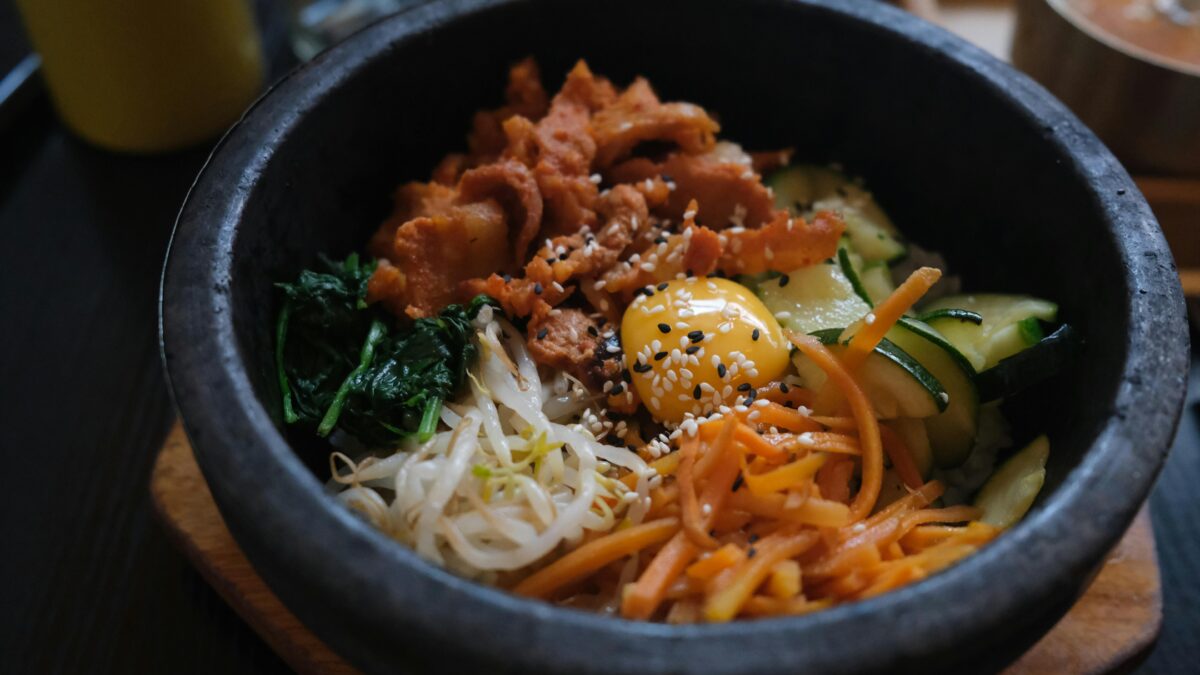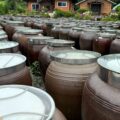Bibimbap

What is Bibimbap?
Bibimbap (비빔밥) is one of the most quintessential Korean foods. The dish is popular all over Korea and is now gaining popularity abroad. It is full of variety in both flavor and texture. The combination of incredibly deep flavors and contrasting colors makes for a magnificent dish. It is rare to find a meal these days where the beauty of the presentation matches the heavenly taste, but Bibimbap is one of those rare dishes.
Bibimbap means “mixed rice with meat and assorted vegetables.” You can make countless variations of this dish depending on your preferences and dietary needs (e.g. Saessak Bibimbap with microgreens) and depending on the dish or bowl it is served in (e.g. Dolsot Bibimbap in a hot stone bowl, Yangpun Bibimbap, or regular Bibimbap).
More traditional and authentic versions of Bibimbap are served with raw beef and raw egg yolk along with assorted vegetables, but making it with cooked ingredients is also common.
Where to find the best Bibimbap?
Bibimbap is one of the most nutritious foods, not just among Korean cuisine, but in the world. It contains a wide range of vitamins, minerals, proteins, carbohydrates, and fats. A typical Bibimbap features a beautiful bed of steamed mushrooms, zucchini, rice, lettuce, cucumbers, bean sprouts, spinach, gim (dried seaweed), tofu, ginger root, gochujang (red chili paste), and a raw egg on top. Depending on the region, it can include different proteins such as beef, pork, mussels, or fish.
The most famous Bibimbap comes from the city of Jeonju, known as the home of Bibimbap. Jeonju Bibimbap is considered the most nutritious and delicious version. While it follows the same basic recipe, there are subtle differences: the rice is cooked in beef broth instead of water, meat is the main protein, and bean sprouts are often included, served alongside a bean sprout soup.
Once your meal arrives, you may take a moment to admire the colorful presentation before mixing all the ingredients together. The dish is packed with flavor, offering a true appreciation for fresh, well-prepared ingredients. Even without meat, it is extremely tasty, full of texture, flavor, and nutrition. The egg acts as a binder, bringing the ingredients together. The vegetables remain crunchy and vibrant, even after being sautéed. It is remarkable how such a quick, healthy meal can cost from as little as $4 USD to over $10 USD, depending on ingredients. In Jeonju, you can even try “Bibimbap Hansang Charim” — a table d’hôte style meal with bibimbap and numerous side dishes covering the entire table — for over $100 USD for a table serving 4 people.
Bibimbap can trace its origins back to traditional Korean ancestral rites (jesa). After the ceremony, family members and relatives would gather at the home of the eldest son (or head of the family) who inherited the ancestral house. There, they would share the rice and various dishes that had been offered on the ritual table, mixing them together evenly in a style similar to today’s Bibimbap.
You can enjoy Jeonju Bibimbap through our Jeonju Private tour



